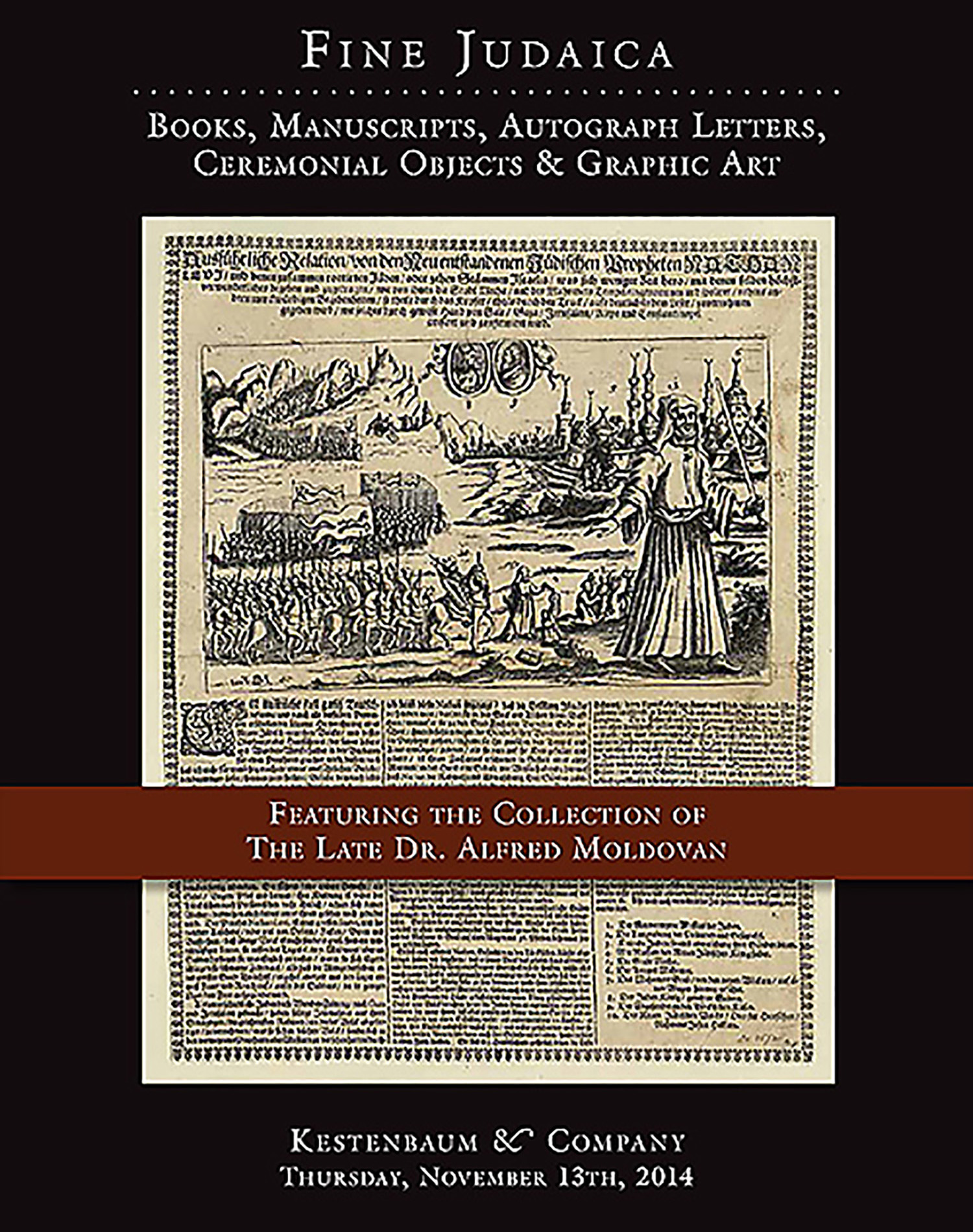Seder Olam Raba and Seder Olam Zuta [Two Midrashic chronologies]. With Megilath Ta’anith and Sepher HaKabalah by Abraham b. David ibn Daud (RAVa’D).

AUCTION 63 |
Thursday, November 13th,
2014 at 1:00
Fine Judaica: Books, Manuscripts, Autograph Letters, Graphic and Ceremonial Art
Lot 186
(MIDRASH).
Seder Olam Raba and Seder Olam Zuta [Two Midrashic chronologies]. With Megilath Ta’anith and Sepher HaKabalah by Abraham b. David ibn Daud (RAVa’D).
Mantua: (Samuel Latif) 1514
Est: $3,000 - $5,000
PRICE REALIZED $6,500
<<Rare first edition of important historical chronological texts.>>
Attributed to the Mishnaic sage R. Yose b. Chalaphta, the Seder Olam Raba is mentioned in the Talmud. It was the first systematic chronology of world history from the Biblical Adam until the destruction of the Second Temple.
The Megilath Ta’anith is of Tannaitic origin and is particularly useful as an historical parallel to the facts as presented by Josephus.
The Seder Olam Zuta probably dates to the early medieval period. Abraham Zacuto included large portions of it in his Sepher Yuchasin.
Sepher HaKabalah is a history of Jewish tradition oriented against Karaite teachings and seeking to prove that Torah fulfills itself only through Rabbinic tradition.
Appended to Sepher HaKabalah are two additional historical compositions: Zichron Divrei Romi, a history of Rome until the rise of Islam as a political force. Within is also stated that the New Testament was a fabrication of Constantine. The second appended work is Divrei Malchei Yisrael BeBayith Sheni, a history of the Second Temple period.
For a scholarly edition of Sepher HaKabalah, see G. D. Cohen (ed.) Sefer haQaballah (1967). For more information on Megilath Taanith, see EJ, Vol. XI, cols. 1230-1.
